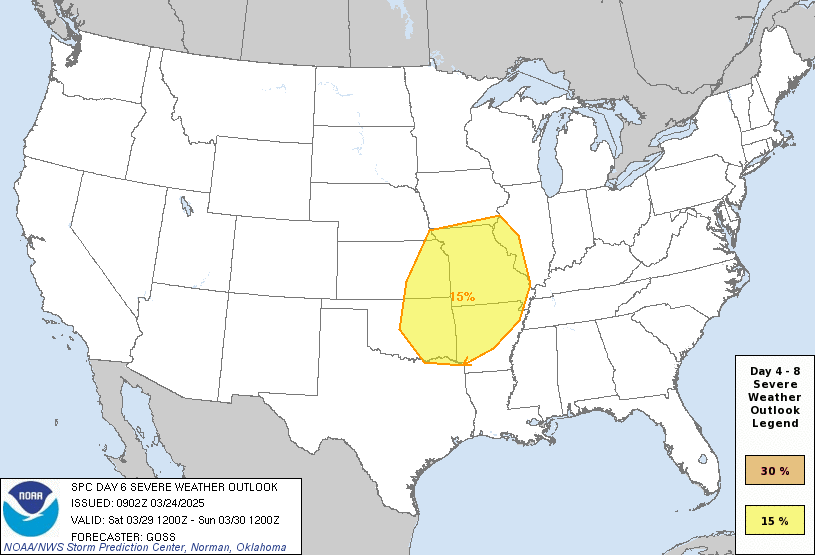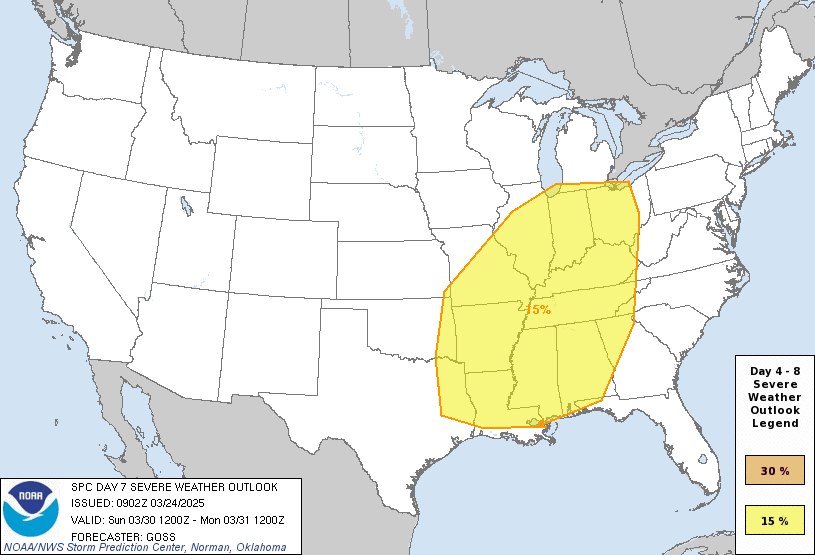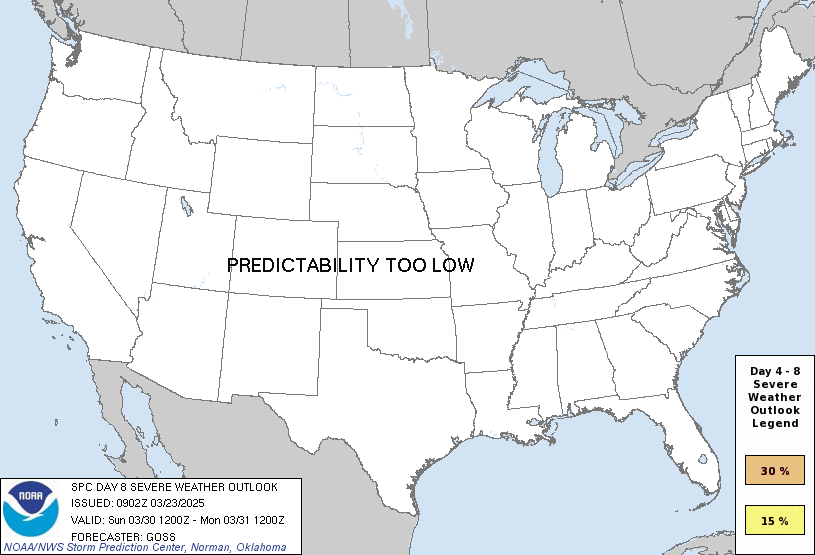So, the Storm Prediction Center issued a Slight Risk for Day 6, Day 7 or Day 8, eh? That must mean it is definitely going to be bad, right?
As Lee Corso would say, “Not so fast, my friend.”



The Storm Prediction Center is a group of highly talented meteorologists. These people can forecast! Really, really well. However – somewhat like the Grim Reaper – they can get a bit of a bad rep for being a beacon for death and destruction. I mean, if every time you heard the words “SPC” it was followed a few days later by a tornado through your backyard, you’d start to become a bit fearful of the letters.
I get it!
Today, though, I want to take some time to explain why having them highlight a longer-range severe weather risk, doesn’t necessarily mean it is definitely going to be very bad for everyone.
Visibility doesn’t always equal intensity
We humans use our measly Five Senses every day to navigate the world. They serve us well enough, but definitely have their pitfalls. One problem is that our sense are incomplete and can really mess with our objective digestion of information.
For example: Our vision. Some of us have better vision than others, but most everyone can relate to trying to see something far away.
Example time!
What if I was standing on the side of a highway and I told you that there was a certain vehicle on the road from a mile away? You may assume that it is a semi-truck rather than a motorcycle. Trucks are bigger, afterall. And bigger objects are easier to see from a distance. That makes sense.
That, generally, works in other walks of life, too.
It can be the same thing when looking up at the stars. Sirius is commonly thought of as the brightest star at night. It is twice as big as the Sun, 25 times more luminous, and about 8.6 light years away. It is even easier to see than Alpha Centauri, a star that is only 4.6 light years away, only 1.5 times more luminous than the Sun, and about the same size as the Sun.
In both cases, the bigger thing is the easier one to see. With stars, even when one thing is way farther away.
But with forecasting, that isn’t always the case. Sometimes Mother Nature has a “Tell” like playing Poker. That’s to say, sometimes as meteorologists we can pick out certain setups within the model data that, in the past, created scenarios that – we know! – produced at least one severe storm. And we have enough evidence that this has happened, that we are able to make a prediction that it will happen again.
With Poker, we all have that friend who just can’t bluff. Sure. But we also have friends who do the same things every time they get a good hand. If your friend always decideds to get up and grab another beer when he gets a flush, you’d question whether to go “all in” the next time he went to the fridge. You may also start checking the fridge door for extra cards!
But okay… Let’s go back to the road example again.
What if we had access to other data. What if a biker bar was a mile away on that same road? Or they were actively logging a forest a mile away just off of that road? Or maybe there was an antique car show? In that case, I wouldn’t need to “See” a vehicle to forecast the higher likelihood of a certain type of vehicle. As a meteorologist, forecasting that there will be a certain vehicle at a mile away isn’t a leap of faith. Certain vehicles drive on roads, I’m looking at a road. With the extra data I have, I can make a supposition that I see a bike, or a semi, or a ’46 Ford from a mile away.
Now, lets turn it back to the forecast.
So! As that vehicle (severe weather) gets closer (in time) I can then figure out specifically what kind (intensity) of vehicle (severe weather) it is (will be). But until then, all I know is that it is a vehicle (severe weather).
The SPC is looking at the available data, and making a forecast based on specific data that isn’t based on the intensity (size) of what they see, but rather on if it actually exists.
Last time doesn’t equal this time
In sports, just because something happened the last time two teams played, doesn’t mean the outcome will be the same the next time. Remember the 2011 Alabama-LSU game that finished 9-6 in OT? What happened later that season the teams met again?
A much different outcome.
It is the same thing with weather: Just because the last time the SPC issued a Slight Risk six days out a tornado rolled through your neighborhood, doesn’t mean it will the next time.
Severe setups can offer different outcomes, even though we use the same word “severe” to describe what happened – be it hail, wind, flooding, or tornadoes. Sometimes a setup can be a “wind event” where there may still be a Slight Risk, but it is a Slight Risk for wind. Same can be true for hail.
Still bad. But not always the same.
And at six or seven days out, meteorologists cannot differentiate between specific threats. Because, a bit like I pointed out above, we are looking at the “Tell” so all we know is that it is a setup that, in the past, produced severe weather. Sometimes it is wind, other times it is hail, maybe a few times it was tornadoes. But it happened.
Once meteorologists get access to more refined, higher-resolution data (within 72 hours of an event) then they can start to nail down specific threats.

